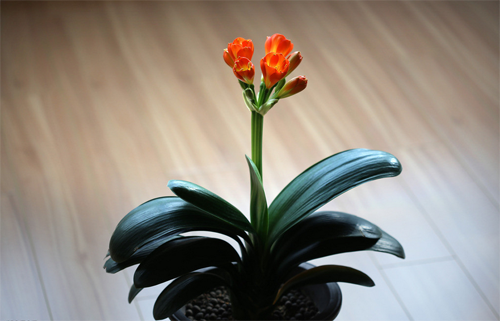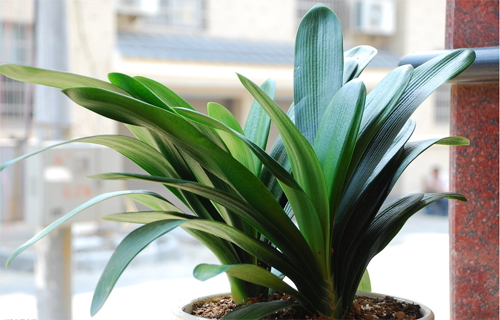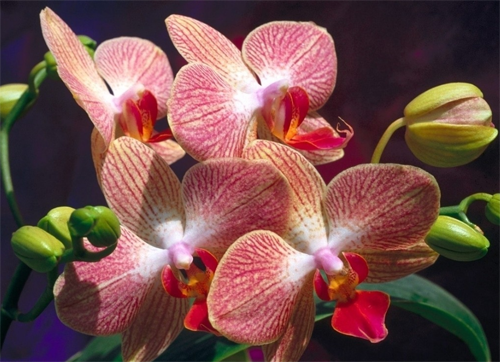What about the yellow spots in the leaves of Magnolia? the leaves are irregular.
Cymbidium is very common, but many people raise Cymbidium will have a lot of problems, in the process of breeding Cymbidium will appear yellow leaves, but also long spots, it is really as ugly as it is ugly, and there will be irregular leaves, what should we do? Come to the Women's Network to see the solution:

How does the gentleman orchid leaf hair yellow long spot do?
1. Cymbidium leaves yellowing, middle small leaves black rot solution: the emergence of this symptom requires the above nine methods to do the right remedy to the case. While the middle small leaves blackened and rotten, we need to make a further judgment, break open the two leaves to check, if the gap between the leaves blackened out of festering juice. It can be judged that the formed gentleman orchid arrow did not have time to grow out of the leaves and rot directly in the middle of the leaves.
There are many reasons for flower and arrow rot: one is that too much water is sprayed in the hands of the florist, causing sewage to flow into the crevice and lead to bacterial infection, and the other is due to careless watering that causes sewage to splash into the crevice and cause rot. Consequences: under normal circumstances will not affect the life of the orchid, but if in high temperature and humidity weather, it is very easy to cause wiping head and the whole plant rot. Treatment: toilet paper or facial Jack paper can be used to absorb rotten juice, use appropriate methods to remove dirt that can be cleaned, and usually keep the environment relatively dry, it is recommended to use basin watering method. two。 The solution to the yellowing of all the leaves of Cymbidium: all yellowing, which is often a symptom of sunburn, the solution: shade immediately and cut off the yellow leaves. 3. The solution to the withered and sagging leaves of Cymbidium: the withered or drooping leaves are a symptom of lack of water. Watering should grasp the principle of no dry, no watering, no stagnant water in the basin. 4. The local yellowing solution of the leaves of Cymbidium is as follows: local yellowing, probably fire roasting, cold wind blowing, water scalding, acid and alkali erosion. You can rule out external causes in time. Sometimes, the lack of nitrogen fertilizer may cause plants to suffer from chlorosis. The decrease of chlorophyll causes the leaves to turn yellow. In this case, fermented cake fertilizer and water can be added. (different seasons, breeding methods are also different) 5. The leaves of Cymbidium are wrinkled and yellow spots.
Solution: root burning caused by excessive fertilization. Should immediately change the soil, and soak the roots with 0.1% potassium permanganate aqueous solution for 20-30 minutes, rinse with clean water, remove the rotten roots after drying, spread plant ash on the wound, and replant. 6. The solution to the yellowing of the outer two leaves of Cymbidium (planted for 4 years): this is a normal new layer of metabolism, only need to prune the outer 2 leaves. 7. Cymbidium leaves appear gray-yellow solution: the reason for the grayish yellow leaves is mainly because the direct sunlight is too strong, the need for shade. 8. Cymbidium leaves yellowing symptoms solution: due to lack of light, if the room is very dark, the orchid will be yellowed. Solution: replenish the light with fluorescent lamps. 9. The solution to the yellow weakness of the leaves of Cymbidium: the yellow and weak leaves are lack of fertilizer. Thin fertilizer should be applied frequently; the yellowing of leaves is native and impermeable. Rotten leaf soil or pine needle soil should be replaced; 10. Solution to root rot caused by yellowing of low leaves: materials: scissors, art knife, chlorothalonil, rooting water, nutrient water, spray bottle. Method of operation: ①: pull up the magnolia by the root. ②: cut off the old and rotten leaves with a beauty knife. ③: use scissors to cut off rotten roots and old roots. ④: mix the spray bottle with 3:5 water and chlorothalonil. ⑤: move the orchid back to the basin. ⑥: pour with rooting water and nutritious water. ⑦: water about twice a month for 5 months. ⑧: after 5 months, water will be watered about 4 times a month for 2 months. ⑨: return to normal watering times.
The way to prevent the leaves of Cymbidium from yellowing: the reason for the yellow leaves is mainly due to improper management. Lead to the yellow leaves of Cymbidium, but there are the following reasons: 1, the water is too big (the leaves are yellow caused by water): the pots have accumulated water for too long, the leaves are easy to produce infiltrative yellowing, the occurrence site is the tip of tender leaves, and the symptoms develop from top to bottom. That is, the common water yellow, caused by frequent watering, is characterized by no obvious change in the old leaves and yellowing of the young leaves; this should be controlled immediately; 2. Lack of water (leaves yellowing caused by drought): if the leaves are too dry, or if half of the water is watered every time, the old leaves will be yellow. Due to the lack of water and drought, it is characterized by the yellow of the old leaves from the bottom to the top, and if the lack of water is a little longer, the whole plant will be yellow, or even die, and should be watered in time; 3. Hypertrophy (yellowing caused by excessive fertilization): excessive and concentrated fertilization will cause root burning and leaf yellow tip. Caused by excessive fertilization or high concentration; characterized by thick, shiny and uneven young leaves; fertilizer, ploughing and watering should be controlled; 4. Lack of elements to lose green (iron deficiency): if iron is deficient in basin soil, the top of the leaf turns yellow first. If there is a lack of nitrogen, the new leaves are yellowish white. 5. Yellowing caused by lack of nutrients: it is caused by insufficient fertilizer, low fertilization concentration, and long fertilization interval; it is characterized by yellow young leaves and tender stems, and if it is not fertilized in time after seeing this phenomenon, it will also cause yellow leaves and even death of the whole plant; for flowers lacking fertilizer, do not apply a large amount of thick fertilizer at one time, so as not to cause root burning. Due to the great change of soil fertility conditions, the phenomenon of yellow leaves often appears in the greenhouse, which is characterized by obvious young leaves, light old leaves, yellow mesophyll, green veins and a typical network, which can be solved by using ferrous sulfate solution. the method is as follows: 7 parts of cake fertilizer, 5 parts of ferrous sulfate and 200 parts of water. 6. Sunburn: after strong direct sunlight (summer), macula occurs in the leaves, which is called sunburn. When dried at high temperature (more than 30 ℃), the leaves are also easy to yellowing. 7. Pollution: the leaves of Cymbidium should be kept clean. If splashed with dirt, the contaminated place may turn yellow. 8. Freezing injury: the freezing injury occurs when the orchid is below 0 ℃, and the symptom is still yellow leaf. In order to restore the normal growth of Cymbidium after yellow leaves, it is necessary to find out the source of the disease and take corresponding measures. The method is: dig out the whole orchid to check the root, such as the rotten root, remove the rotten part, change the new soil and re-cultivate it, and put a layer of fine sand under the root. Loose rotten leaf soil should be used in basin soil, and the pH (pH) should be neutral. The soil is not dry or wet and has good ventilation. Gentleman orchid likes weak light, except in winter, summer should be placed in a half-yin and half-yang place, avoid the direct sun. If the occurrence of "green deficiency" can add liquid fertilizer (such as black alum fertilizer water), the key point is less and more times, be careful not to splash the fertilizer or mud on the leaf, if splashed on the leaf, rinse it off with clean water in time. When applying solid fertilizer, it is better to avoid direct contact with fleshy roots.
Cymbidium leaves yellowing treatment questions: 1. Can the yellow leaves of Cymbidium be pruned. ? The key is to figure out why there are yellow leaves. The general reasons for yellow leaves are: ① should be kept in a semi-shady place, and the leaves will be sunburned and yellowed when the sun is big. ② gentleman orchid for the fleshy root basin to keep a little damp can, too much water to hurt the root leaves will turn yellow. The leaves of ③ are yellow when they are deficient in fertilizer, and orchids can apply dilute nitrogen fertilizer once every half a month, and do not apply fertilizer in summer to avoid root damage. The yellow leaves of the orchid can be trimmed, the scissors can be roasted on the fire and sterilized, and then the yellow leaves can be cut off, but not torn. two。 The solution to the yellowing of the leaves of Cymbidium in spring: after a winter, the leaves turned yellow and withered. Can spring still live should be OK, turn the basin, remove dead leaves, hollow root removal, with gentleman orchid special soil, mixed with a large lump of orchid stone, soil: blue stone = 3:2. Pour water once after turning the basin, put it in the astigmatism ventilation place to slow the seedling for 1 month, then use a week to gradually see the light, normal maintenance can be. Do not expose yourself to the sun. 3. Summer gentleman orchid leaves yellowing solution: to see if it is usually too much watering, watering too much easily rotten roots, rotten leaves and rotten stamens, and should be poured in the basin soil, not on the leaves, especially on the central leaves. If the basin soil is often too wet, it will cause the water to flow back, and then, as you said, it will gradually blacken and rot from the tip of the leaf, so the basin soil should be on the dry side. In addition, the temperature is higher in summer, if the temperature of its growth environment drops below 25 degrees, rarefied liquid fertilizer above 1:20 can also be applied in summer, once every semimonthly. This can promote the growth of Magnolia, so that it can shorten the dormancy period or not dormancy. There is another situation: the light is too strong. Gentleman orchid is soft and light, if the strong light, the leaves will become rough, the leaves will become yellow and dark, lose emerald green, but also easy to cause "sunburn".
What if the leaves of Cymbidium are askew and irregular?
1 use small clamps with appropriate strength (such as small bamboo clips for drying) with soft paper to clip the skewed leaves together with the normal leaves directly, and the crooked leaves can be corrected after a period of time. 2 use opaque Zipper paper, or thin cardboard according to the length of the leaf, folded into a width of 1 blade and 2 blades, fixed on the blade with a hairpin or needle, and the leaf is skewed over there, and the leaf can be restored after a few days. In this process, we should pay attention to observe at any time to prevent overcorrection. 3 when viewed from the front of the orchid, some leaves are spaced and some are next to each other, thick cardboard can be used to make a cover board, according to the number of leaves, open some slots with the same spacing, and carefully clip the leaves inside. After the above various methods of treatment, plastic surgery, so that the gentleman orchid to see a line, face up to the ideal form such as opening a fan. At ordinary times, we should pay attention to the placement direction of the gentleman orchid, point the top of the leaf to the north-south direction respectively, and rotate the flowerpot 180 degrees regularly, and take turns to change the north-south orientation of the two groups of leaves. The soil exchange for the orchid had better be carried out in spring and autumn, because the temperature is suitable at this time, the orchid grows vigorously and will not affect the growth because of the change of soil. In the south, the first vigorous growth period of Cymbidium is from March to June, when the lowest temperature in the south is 10 ℃ ~ 15 ℃, the highest is 20 ℃ ~ 28 ℃, and some areas may exceed 30 ℃, which is the suitable growth temperature. The grower can turn the basin and change the soil from March to April according to the actual situation of the region; the second is from August to September, when the day is warm and cool and the temperature is moderate, which is the second exuberant growth period of Cymbidium. According to the growth of the plant, the grower can turn the pot in autumn in the middle of August. It should be noted that after archery, or in the bud flowering period, it is best not to change the soil, because the plant needs more nutrients at this stage, and the implementation of the soil exchange operation will affect the continuous supply of nutrients. However, if rotten roots or yellow leaves have to be changed due to poor soil quality, care should be taken not to break up the tuo and minimize the loss caused by the change of soil.
It is not easy to raise a gentleman's orchid to look good. After reading these breeding methods, you really need to sort things out.
What is the reason why the leaves of Cymbidium are yellow? What if the leaves of Cymbidium turn yellow?
Cymbidium is a perennial herb of the genus Amaryllidaceae, which is a semi-negative plant, which likes to cool and avoid high temperature. The suitable temperature for growth is 15-25 ℃, and it stops growing when it is lower than 5 ℃. It has high ornamental value. However, the orchid will also encounter trouble in the process of growth, what should be done if the leaves turn yellow, and what is the reason?
Editor recommends: what are the plants that absorb formaldehyde? What is the best radiation protection plant golden cactus, how to raise the golden tiger cactus?
What is the reason why the leaves of Cymbidium turn yellow? What if the leaves of Cymbidium turn yellow?
Click on the picture to learn more about it.
- Prev

The cultivation methods and matters needing attention of Magnolia how to do with rotting Root and rotten Heart
Many families like to raise orchids. As long as they raise orchids, when others come to see your orchids at home, they will praise them. The premise is that orchids will look good, and if orchids are raised, they will have rotten roots and rotten hearts. What can be done? I have been raising myself very attentively.
- Next

What is the price of the family farming methods and precautions of Mo Lan?
Mulan is easy to raise plants at home, but I don't know if Mulan likes sunshine. Or do you like it dark and damp? How to raise ink orchid at home? What are the precautions? is the price of ink orchid expensive? how much is one?
Related
- Fuxing push coffee new agricultural production and marketing class: lack of small-scale processing plants
- Jujube rice field leisure farm deep ploughing Yilan for five years to create a space for organic food and play
- Nongyu Farm-A trial of organic papaya for brave women with advanced technology
- Four points for attention in the prevention and control of diseases and insect pests of edible fungi
- How to add nutrient solution to Edible Fungi
- Is there any good way to control edible fungus mites?
- Open Inoculation Technology of Edible Fungi
- Is there any clever way to use fertilizer for edible fungus in winter?
- What agents are used to kill the pathogens of edible fungi in the mushroom shed?
- Rapid drying of Edible Fungi

